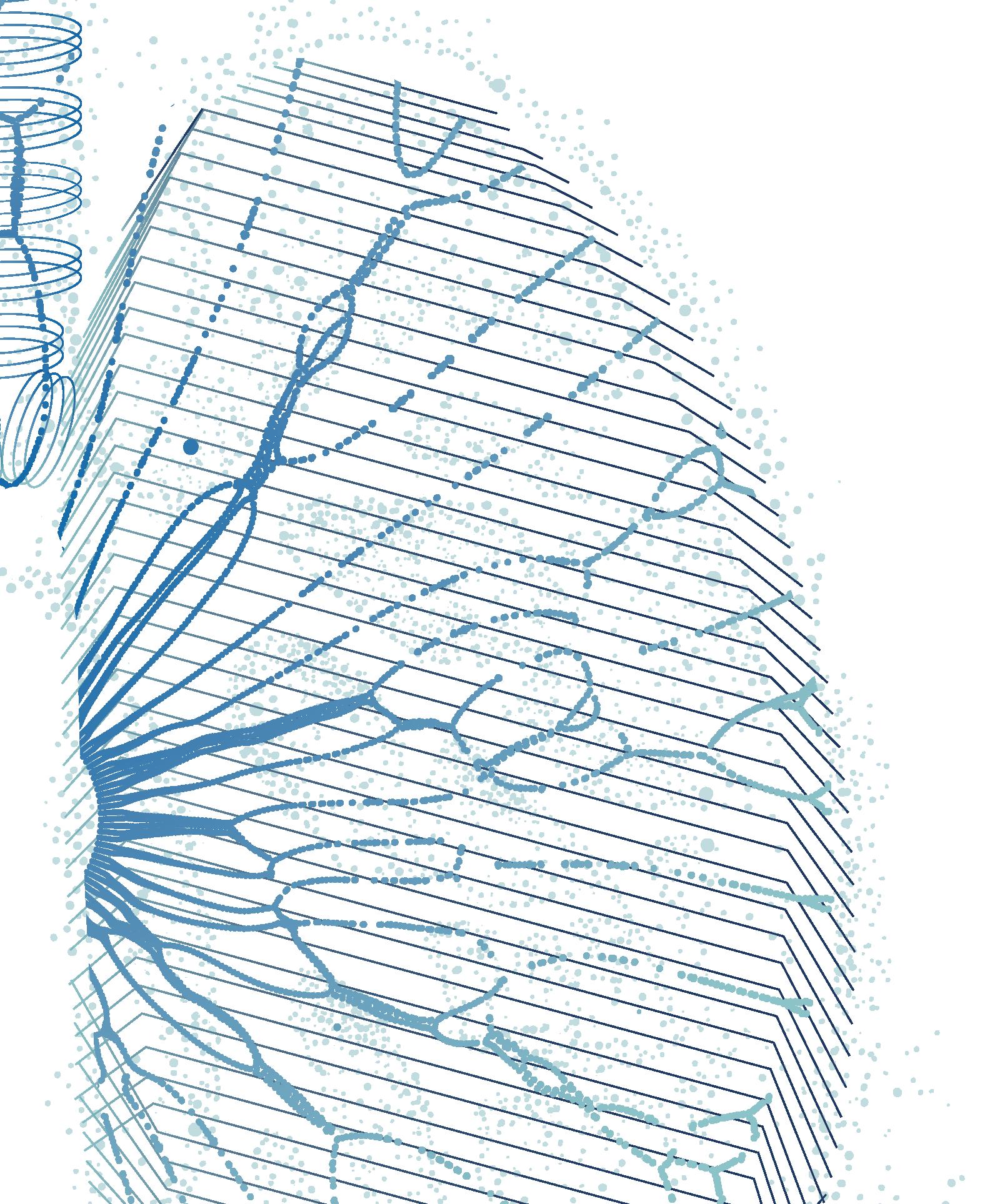

Clinical Trial Brochures
For more information on the studies in this booklet, please contact GileadClinicalTrials@gilead.com
Last updated 05/25
1L
Clinical program in thoracic cancers Contents
The safety and efficacy of these investigational agents and/or uses have not been established. There is no guarantee that they will become commercially available.
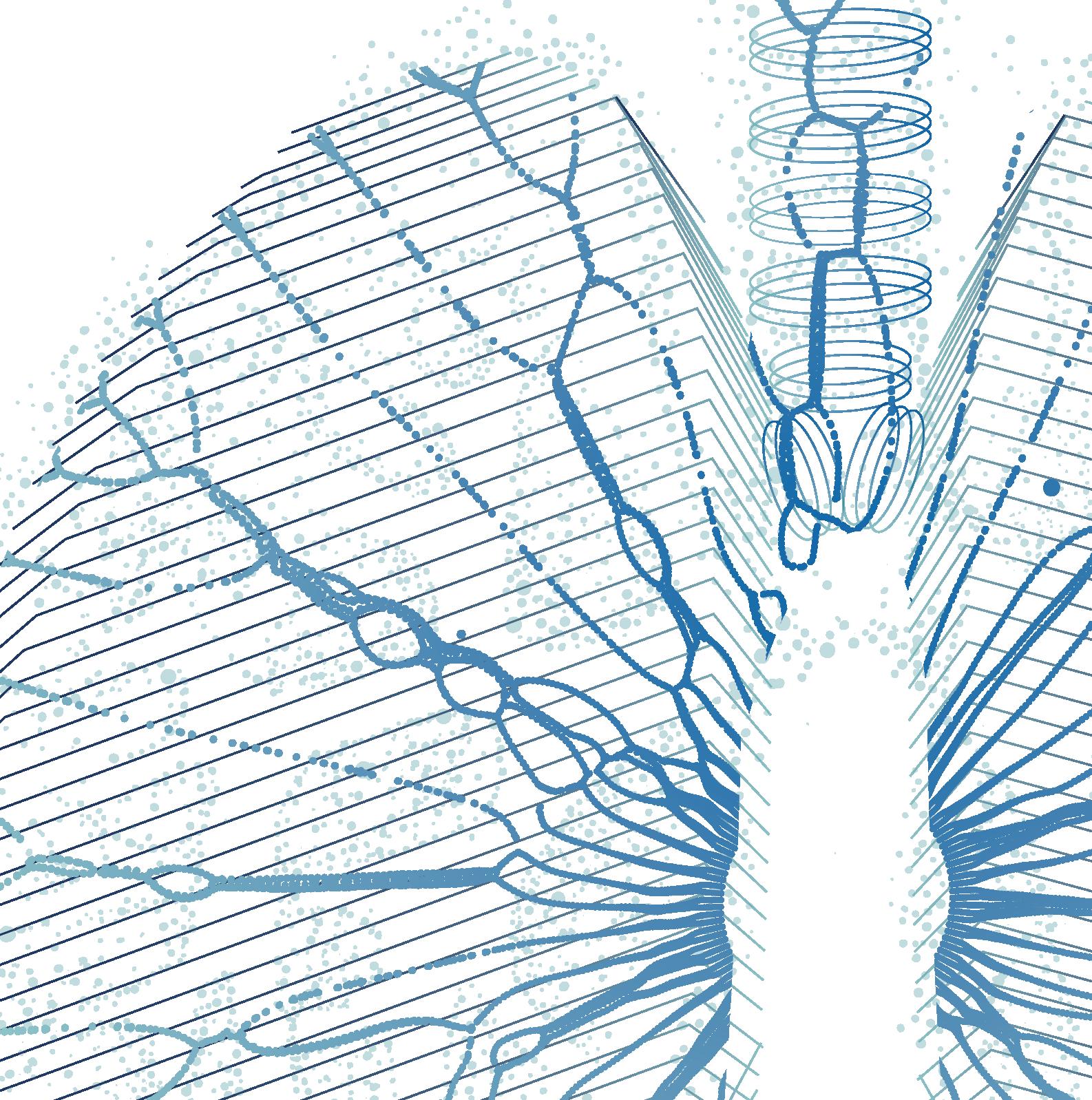
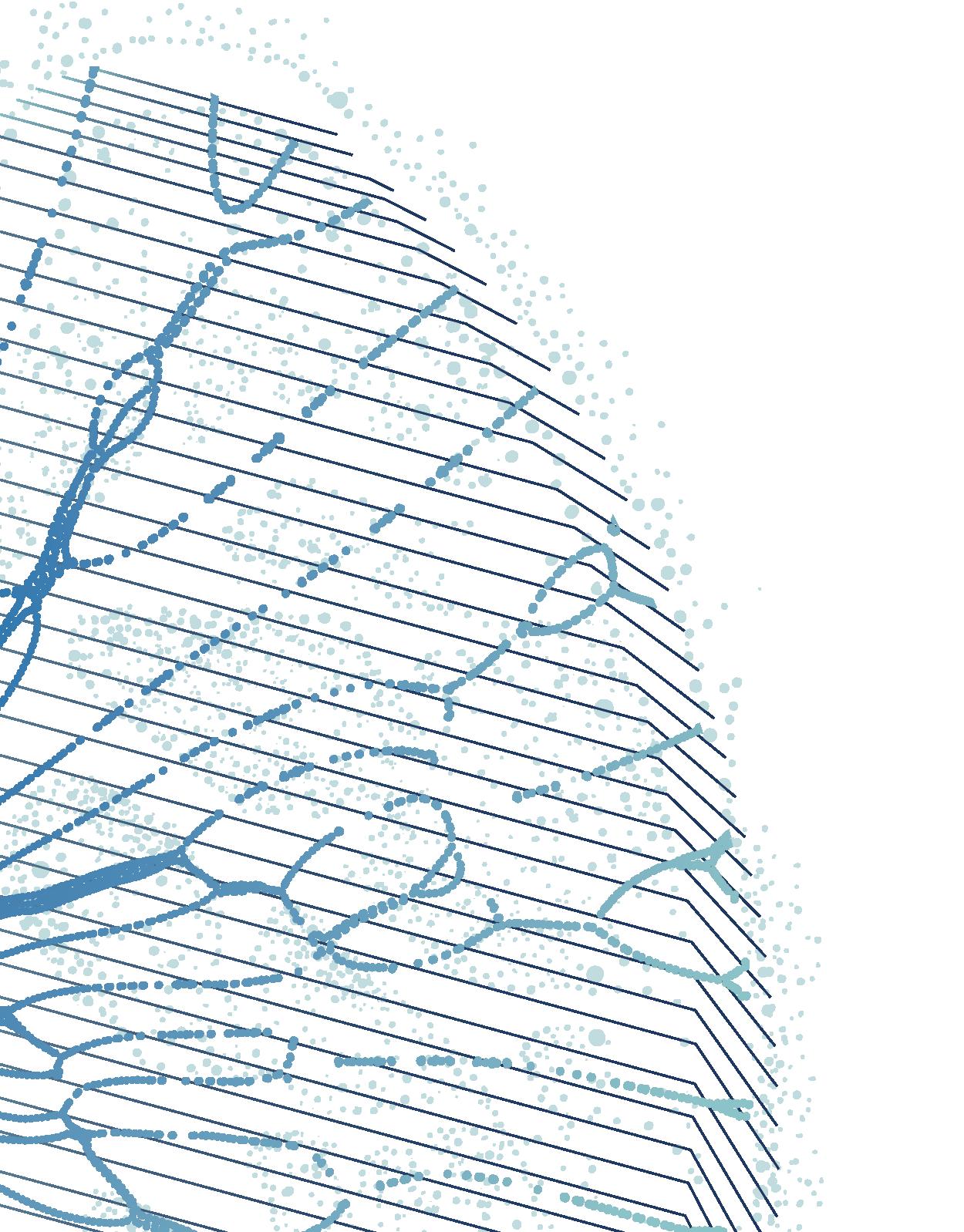
Unmet Need in Thoracic Cancers
In the US, lung cancer is the third most common cancer, with an estimated 226,650 new cases in 2025, accounting for 11.1% of all newly diagnosed cancers.1 It is the leading cause of cancer-related deaths, with an estimated 124,730 deaths in 2025 – accounting for over 20% of all cancer deaths.1 Between 2015 and 2021, an estimated 52% of all patients with lung cancer in the US had metastatic disease at diagnosis.1
Up to 85% of lung cancers are NSCLC and 10%-15% are SCLC. Both subtypes are associated with poor prognoses, representing major unmet needs for patients.2
NSCLC, non-small cell lung cancer; SCLC, small cell lung cancer.
1. National Cancer Institute: SEER Cancer Stat Facts. Lung and Bronchus Cancer. Accessed May 7, 2025. Available at: https://seer.cancer.gov/statfacts/html/lungb.html
2. Schabath MB, Cote ML Cancer Epidemiol Biomarkers Prev. 2019;28(10):1563-79.
For more information on the studies in this booklet, please visit gileadclinicaltrials.com
Thoracic trials by line of therapy
population clinical trials
Stage 2-3
resectable
1L
VELOCITY-Lunga Substudy-03
research area
Substudy-01 (Stage IV)
Substudy-A, -B
VELOCITY-HNSCCa Substudy-01
2L+
VELOCITY-Lunga
Substudy-02 (Stage IV)
EDGE-Lunga Substudy-C
TROPiCS-03 Basket
aIn collaboration with Arcus Biosciences. bIn collaboration with Merck.
1L, first line; 2L, second line; A2AR/A2BR, adenosine 2A receptor/adenosine 2B receptor; chemo, chemotherapy; CD73, cluster of differentiation 73; ES-SCLC, extensive stage small cell lung cancer; HNSCC, head and neck squamous cell carcinoma; m, metastatic; NSCLC, non-small cell lung cancer; PD-1, programmed cell death protein 1; Ph, phase; SCLC, small cell lung cancer; SG, sacituzumab govitecan; Trop-2, trophoblast cell-surface antigen 2; TIGIT, T cell immunoreceptor with immunoglobulin (Ig) and immunoreceptor tyrosine-based inhibitory motif (ITIM) domains.
molecular combinations and scientific focus
molecules
scientific focus areas
Tumor-intrinsic cell death Immune-mediated tumor killing Tumor-permissive microenvironment
domvanalimab (TIGIT)
zimberelimab (PD-1) chemo
sacituzumab govitecan (SG) (Trop-2)
zimberelimab (PD-1)
SG (Trop-2)
SG (Trop-2)
zimberelimab (PD-1)
domvanalimab (TIGIT)
pembrolizumab (PD-1)
pembrolizumab (PD-1)
pembrolizumab (PD-1) chemo
zimberelimab (PD-1)
domvanalimab (TIGIT)
domvanalimab (TIGIT)
quemliclustat (CD73)
etrumadenant (A2AR/A2BR)
zimberelimab (PD-1) chemo
SG (Trop-2)
SG (Trop-2)
zimberelimab (PD-1)
SG (Trop-2)
domvanalimab (TIGIT)
zimberelimab (PD-1)
domvanalimab (TIGIT)
etrumadenant (A2AR/A2BR)
quemliclustat (CD73)
Clinicaltrials.gov website. Accessed May 7, 2025. https://www.clinicaltrials.gov.
The safety and efficacy of these investigational agents and/or uses have not been established. There is no guarantee that they will become commercially available.
Not recruiting
An Open-Label, Multicenter, Phase 2 Study of Sacituzumab
Govitecan
Combinations in First-Line Treatment of Patients With Advanced or Metastatic Non-Small Cell Lung Cancer Without Actionable Genomic Alterationsa
Study Design1-3
Patients
Previously untreated Stage IV NSCLC
N=193
Safety run-in to determine regimen & RP2Db,c
Sacituzumab govitecan 10 mg/kg IV DAY 1 AND DAY 8
Pembrolizumab 200 mg IV DAY 1
21-DAY CYCLE
Sacituzumab govitecan RP2D IV
DAY 1 AND DAY 8
Pembrolizumab 200 mg IV DAY 1
Carboplatin AUC5 or Cisplatin 75 mg/m2 IV DAY 1
SG is continued until PD or unacceptable toxicity Pembro for up to 25 cycles and Carboplatin/ cisplatin for up to 4 cycles
aIn collaboration with Merck. bPatients will receive SG (de-escalating dose levels: 10 mg/kg, 7.5 mg/kg, or 5 mg/kg) on Days 1 and 8 of a 21-day cycle + pembrolizumab 200 mg on Day 1 of a 21-day cycle + carboplatin AUC5 on Day 1 of a 21-day cycle. cPatients will receive SG (either 10 mg/kg or 7.5 mg/ kg) on Days 1 and 8 of a 21-day cycle + pembrolizumab 200 mg on Day 1 of a 21-day cycle + cisplatin 75 mg/m2 on Day 1 of a 21-day cycle.

Key Eligibility Criteria1-3
Key Inclusion Criteria
• Pathologically documented Stage IV NSCLC
• No prior systemic treatment for mNSCLC
• ECOG PS of 0 or 1
• No known actionable genomic alterations
• Adequate hepatic function and hematologic counts
Endpoints1,2
Primary Endpoints
• ORRd
• Percentage of patients experiencing DLTs per dose level in the safety run-in cohort
Key Exclusion Criteria
• Mixed SCLC and NSCLC histology
• Active secondary malignancy
• No prior systemic treatment for mNSCLC
• Active CNS metastases or carcinomatous meningitis
Secondary Endpoints
• PFSd
• OS
• DORd
• DCRd
• Safety and tolerability
dBy the IRC per RECIST v 1.1.
AUC, area under the curve; CNS, central nervous system; DCR, disease control rate; DLT, dose-limiting toxicity; DOR, duration of response; ECOG PS, Eastern Cooperative Oncology Group performance status; IRC, independent review committee; IV, intravenous; m, metastatic; nsq, non-squamous; NSCLC, non-small cell lung cancer; ORR, objective response rate; OS, overall survival; PD, progressive disease; PD-L1, programmed cell death ligand 1; Pembro, pembrolizumab; PFS, progression-free survival; RECIST, Response Evaluation Criteria in Solid Tumors; RP2D, recommended Phase 2 dose; SCLC, small cell lung cancer; SG, sacituzumab govitecan; sq, squamous; TPS, tumor proportion score; v, version.
References
1. Clinicaltrials.gov website. Accessed April 10, 2025. https://www.clinicaltrials.gov/study/NCT05186974.
2. Cappuzzo F, et al. Poster presentation at ELCC 2024. December 1-3, 2023. Chicago, IL. Poster #60P.
3. Garon EE, et al. Poster presentation at ASCO 2022. June 3-7, 2022. Chicago, IL. Poster TPS9146.
The safety and efficacy of these investigational agents and/or uses have not been established. There is no guarantee that they will become commercially available.
Identifier: NCT05609968
EVOKE-03: An Open-Label, Multicenter, Phase 3
Randomized, Active-Comparator-Controlled Clinical
Study of Pembrolizumab in Combination With Sacituzumab Govitecan Versus Pembrolizumab
Monotherapy
as First-Line Treatment in Patients With PD-L1 TPS ≥50% Metastatic Non-Small Cell Lung Cancera
Study Design1,2
Stage IV mNSCLC; no prior treatment; PD-L1 TPS ≥50% N~614 Patients
Arm A
Sacituzumab govitecanb 10 mg/kg IV
DAY 1 AND DAY 8 OF 21-DAY CYCLE
DAY 1 OF A 21-DAY CYCLE
Arm B
Post-treatment assessment period and long-term survival follow-up 1:1 Randomization
Pembrolizumabc 200 mg IV
DAY 1 OF A 21-DAY CYCLE + Pembrolizumabc 200 mg IV
aIn collaboration with Merck. bContinue sacituzumab govitecan treatment until disease progression, death, unacceptable toxicity, or another treatment discontinuation criterion is met. cContinue pembrolizumab treatment for up to 35 cycles.
Key Eligibility Criteria
1,2
Key Inclusion Criteria
• ≥18 years of age
• Histologically or cytologically confirmed Stage IV NSCLC per AJCC Staging Manual v8
• ≥1 measurable lesion per RECIST v1.1
• ECOG PS of 0 or 1 within 7 days before randomization
• PD-L1 TPS ≥50% as assessed by IHC at a central laboratory
• No sensitizing EGFR, ALK, or ROS-1 alterations
• Adequate organ function
• Life expectancy ≥3 months
Endpoints
1,2
Primary Endpoints
• PFS per RECIST v1.1 by BICR
• OS
Key Exclusion Criteria
• History of second malignancy, unless potentially curative treatment has been completed with no evidence of malignancy for 3 years
• Previous systemic chemotherapy or other targeted or biological antineoplastic therapy for mNSCLC
• Previous receipt of any agent targeting topoisomerase 1, Trop-2, PD(L)1, PD-L2, or another stimulatory or coinhibitory T-cell receptor (e.g., CTLA-4, OX-40, CD137)
• Radiotherapy within 2 weeks of starting study treatment or radiationrelated toxicities requiring corticosteroids
• Radiation therapy to the lung >30 Gy within 6 months of starting study treatment
• Active chronic inflammatory bowel disease or gastrointestinal perforation within 6 months of enrollment
• Known active CNS metastases and/or carcinomatous meningitisd
Secondary Endpoints
• ORRe
• DORe
• Safety
• PROs
dPatients with previously treated brain metastases may participate if radiologically stable for ≥4 weeks and clinically stable without need for steroid treatment for ≥14 days before starting study treatment. eAs accessed by BICR using RECIST v1.1.
AJCC, American Joint Committee on Cancer; ALK, anaplastic lymphoma kinase; BICR, blinded independent central review; CD137, cluster of differentiation 137; CNS, central nervous system; CTLA-4, cytotoxic T-lymphocyte associated protein 4; DOR, duration of response; ECOG PS, Eastern Cooperative Oncology Group performance status; EGFR, epidermal growth factor receptor; Gy, Gray; IHC, immunohistochemistry; IV, intravenous; m, metastatic; NSCLC, non-small cell lung cancer; ORR, overall response rate; OS, overall survival; PD-(L)1, programmed cell death (ligand) 1; PD-L2, programmed cell death ligand 2; PFS, progression-free survival; PRO, patient-reported outcome; RECIST, Response Evaluation Criteria in Solid Tumors; ROS-1, ROS proto-oncogene 1; TPS, tumor proportion score; Trop-2, trophoblast cell-surface antigen 2; v, version.
References
1. ClinicalTrials.gov website. Accessed April 10, 2025. https://www.clinicaltrials.gov/study/NCT05609968.
2. Moskovitz M, et al. Poster presentation at AACR 2023. April 14-19, 2023. Orlando, FL. Poster CT067.
The safety and efficacy of these investigational agents and/or uses have not been established. There is no guarantee that they will become commercially available.
TROPiCS-03: A
Phase 2 Open-Label Study of Sacituzumab Govitecan in Patients With Metastatic Solid Tumors
Study Design1,2
Patients N=227
2L+ mNSCLC (SCC and adenocarcinoma)
s/p IO and platinum-based regimen
2L-4L mHNSCC
s/p IO and platinum-based regimena
2L-4L mEC
s/p IO and platinum-based regimena
2L mSCLC
s/p IO and platinum-based regimenb
Sacituzumab govitecan 10 mg/kg IV
DAYS 1 AND 8 OF 21-DAY CYCLE
Signal seeking for POC
Continue to total enrollment
Treatment until PD or unacceptable toxicity
Survival follow-up
Expansion stage planned only for HNSCC, EC, and SCLC cohorts (if efficacy signal met in the POC stage)
aNo more than three prior lines of systemic treatment is allowed. bNo more than one prior line of systemic treatment is allowed.
Key Eligibility Criteria1
Key Inclusion Criteria
• ≥18 years of age
• ECOG PS of 0 or 1
• Histologically documented metastatic or locally advanced solid tumors (NSCLC, HNSCC, EC, and SCLC)
• Measurable disease by CT or MRI as per RECIST v1.1
• Adequate hepatic and renal function (CrCl ≥30mL/min)
• Adequate hematologic counts without transfusional or growth factor support within 2 weeks of study drug initiation
Key Exclusion Criteria

• Have had a prior anti-cancer biologic agent within 4 weeks prior to study Day 1 or have had prior chemotherapy, targeted small molecule therapy, or radiation therapy within 2 weeks prior to Study Day 1
• Have not recovered (i.e., ≤Grade 1) from AEs due to a previously administered agent
• Have previously received topoisomerase I inhibitors
• Have an active second malignancy
• Have known active CNS metastases and/or carcinomatous meningitis
Endpoints1
Primary Endpoint
• ORRc
Secondary Endpoints
• ORRd
• DORc,d
• CBRc,d
• PFSc,d
cAs assessed by Investigator per RECIST v1.1. dAs assessed by BICR per RECIST v1.1.
• OS
• Safety
• PK
• ADA
1L, first line; 2L, second line; 4L, fourth line; ADA, anti-drug antibody; AE, adverse event; BICR, blinded independent central review; CBR, clinical benefit rate; CNS, central nervous system; CrCl, creatinine clearance; CT, computed tomography; DOR, duration of response; EC, endometrial cancer; ECOG PS, Eastern Cooperative Oncology Group performance status; HNSCC, head and neck squamous cell carcinoma; IO, immuno-oncology; IV, intravenous; m, metastatic; MRI, magnetic resonance imaging; NSCLC, non-small cell lung cancer; ORR, objective response rate; OS, overall survival; PD, progressive disease; PFS, progression-free survival; PK, pharmacokinetics; POC, proof of concept; RECIST, Response Evaluation Criteria in Solid Tumors; SCC, squamous cell carcinoma; SCLC, small cell lung cancer; s/p, status post; v, version.
References
1. Clinicaltrials.gov website. Accessed April 10, 2025. https://www.clinicaltrials.gov/study/NCT03964727.
2. Gilead Sciences, Inc. Data on File. Protocol IMMU-132-11 (Amendment 3). November 9, 2021.
The safety and efficacy of these investigational agents and/or uses have not been established. There is no guarantee that they will become commercially available.
STAR-121: A Randomized, Open-Label, Phase 3
Study to Evaluate Zimberelimab and Domvanalimab in Combination With Chemotherapy Versus Pembrolizumab With Chemotherapy for the 1L Treatment of Patients With Metastatic NSCLC With No EGFR or ALK Genomic Tumor Aberrationsa
aIn collaboration with Arcus Biosciences. bZimberelimab, domvanalimab, and pembrolizumab are given Q3W for a maximum of 35 doses. cChoice of chemotherapy is dependent on histology. Patients with non-squamous histology will receive cisplatin 75 mg/m2 or carboplatin AUC5 with pemetrexed 500 mg/m2 Q3W. Those with squamous histology will receive carboplatin AUC6 Q3W with paclitaxel 200 mg/m2 Q3W or nab-paclitaxel 100 mg/m2 QW. After the completion of the first 4 cycles, patients with non-squamous histology may continue with maintenance pemetrexed 500 mg/m2 IV Q3W until PD or intolerable toxicities.

Key Eligibility Criteria
1,2
Key Inclusion Criteria
• Pathologically documented Stage IV NSCLC at the time of enrollment (AJCC 8th edition)
• Documented negative test results for EGFR and ALK mutations
• No known actionable genomic alterations, including ROS-1, NTRK, BRAF, and RET
• Have not received prior systemic treatment for mNSCLC
• Measurable disease per RECIST v1.1 criteria by investigator assessment
• ECOG PS of 0 or 1
• ≥18 years of age
Endpoints
1,2
Primary Endpoints
• OS in PD-L1 TC ≥1%
• OS in all randomized patients
Secondary Endpoints
• PFSd
• ORRd
• DORd
• Safety
Key Exclusion Criteria
• Prior treatment with ICIs
• Have untreated CNS metastases and/or carcinomatous meningitis
• History of (noninfectious) pneumonitis/ILD that required steroids or has current pneumonitis/ILD
• QoL
dAccessed by BICR using RECIST v1.1.
1L, first line; AJCC, American Joint Committee on Cancer; ALK, anaplastic lymphoma kinase; AUC, area under the curve; BICR, blinded independent central review; BRAF, proto-oncogene B-raf; chemo, chemotherapy; CNS, central nervous system; Dom, domvanalimab; DOR, duration of response; ECOG PS, Eastern Cooperative Oncology Group performance status; EGFR, epidermal growth factor receptor; ICI, immune checkpoint inhibitor; ILD, interstitial lung disease; IV, intravenous; m, metastatic; NSCLC, non-small cell lung cancer; NTRK, neurotropic tyrosine receptor kinase; ORR, objective response rate; OS, overall survival; PD, progressive disease; PD-L1, programmed cell death ligand 1; Pembro, pembrolizumab; PFS, progression-free survival; Q3W, every 3 weeks; QoL, quality of life; QW, every week; RECIST, Response Evaluation Criteria in Solid Tumors; RET, rearranged during transfection proto-oncogene; ROS-1, ROS proto-oncogene 1; TC, tumor cell expression; v, version; Zim, zimberelimab.
References
1. Clinicaltrials.gov website. Accessed April 10, 2025. https://www.clinicaltrials.gov/study/NCT05502237.
2. Gilead Sciences, Inc. Data on File. STAR-121 Protocol (Amendment 4). September 30, 2024.
The safety and efficacy of these investigational agents and/or uses have not been established. There is no guarantee that they will become commercially available.
VELOCITY-Lung: A Phase 2 Platform Study Evaluating the Safety and Efficacy of Novel Treatment Combinations in Patients With Lung Cancera
Study Design1-4
Patients N~593
Preliminary Stage
SUBSTUDY-01
Expansion Stage
Proceed with treatment arm(s) demonstrating e cacy signal in preliminary stage
C A B D
COMPARATOR
Continue
Continue
SUBSTUDY-03
Stratification1-4
Substudy-01: 1L mNSCLC
• PD-L1 ≥50% vs <50%
• Histology: squamous vs non-squamous
Enrollment1-4
Substudy-01: 1L mNSCLC
• mNSCLC without actionable mutation, regardless of PD-L1 expression status
• No prior systemic treatment for mNSCLC
• ECOG PS of 0 or 1
• No untreated or unstable brain metastases
Substudy-02: 2L+ mNSCLC
• Histology: squamous vs non-squamous
• Prior therapy for actionable genomic alteration (yes or no)

Substudy-03: Resectable NSCLC
• PD-L1 by SP263 (≥50% vs <50% tumor staining)
• Stage (II vs III)
Substudy-02: 2L+ mNSCLC
• mNSCLC, regardless of PD-L1 expression status
• Progression or recurrence after Plat CT and CPI given either in combination or sequentially
• ECOG PS of 0 or 1
• No known active CNS metastases and/or carcinomatous meningitisd
Substudy-03: Resectable NSCLC
• Resectable Stage II, IIIA, IIIB (T[3-4]N2) NSCLC, regardless of PD-L1 expression status
• EGFR/ALK wild-type
• ECOG PS of 0 or 1
Continued on next page
aIn collaboration with Arcus Biosciences. bChoice of comparator based on the patient characteristics and treatment arms in expansion stage. cChoice of chemotherapy is dependent on histology. dPatients with previously treated brain metastases with stable CNS disease for ≥4 weeks are permitted.
1L, first line; 2L, second line; ALK, anaplastic lyphoma kinase; CNS, central nervous system; CPI, checkpoint inhibitor; Doce, docetaxel; Dom, domvanalimab; ECOG PS, Eastern Cooperative Oncology Group performance status; EGFR, epidermal growth factor receptor; Etruma, etrumadenant; m, metastatic; Nivo, nivolumab; NSCLC, non-small cell lung cancer; PD-(L)1, programmed death (ligand) 1; Plat CT, platinum-based chemotherapy; R, randomization; SG, sacituzumab govitecan; TKI, tyrosine kinase inhibitor; vs, versus; Zim, zimberelimab.
The safety and efficacy of these investigational agents and/or uses have not been established. There is no guarantee that they will become commercially available.
Continued from previous page
Key Eligibility Criteria1-4
Key Inclusion Criteria - All substudies
• ≥18 years of age
• Histologically or cytologically documented NSCLC
• No known actionable genomic alterations for which targeted therapies are available
• ECOG PS of 0 or 1
• Measurable disease as per RECIST v1.1 criteria
• Adequate hematologic and end-organ function
• Patients of childbearing potential who engage in heterosexual intercourse must agree to use specified method(s) of contraception
Key Exclusion Criteria - All substudies
• Mixed SCLC and NSCLC histology
• Active second malignancy
• Active autoimmune disease
• History of or current non-infectious pneumonitis/interstitial lung disease
• Active serious infection within 4 weeks prior to study treatment
Substudy-01 Inclusion Criteria
All Experimental Arms
• Stage IV NSCLC
• For patients with non-squamous histology: EGFR or ALK alteration negative
• PD-L1 status by central confirmation
• No prior systemic treatment for mNSCLC
Substudy-02 Inclusion Criteria
All Experimental Arms
• Stage IV NSCLC
• In patients with non-squamous histology and actionable EGFR, ALK, or other known genomic alterations must have received treatment with ≥1 targeted therapy to the appropriate genomic alteration
Substudy-01 and -02 Exclusion Criteria
• Known active CNS metastases and/or carcinomatous meningitis
• Received previous anticancer therapy within 4 weeks prior to enrollment
Substudy-03 Inclusion Criteria
All Experimental Arms
• Histologically and cytologically confirmed resectable (Stage II, IIIA, IIIB (T[3-4]N2)) NSCLC (per AJCC edition 8) disease with curative intent
• R0 resection is achievable and planned surgery prior to enrollment must be lobectomy, sleeve lobectomy, or bilobectomy
• PD-L1 status by central confirmation
• For patients with non-squamous histology: EGFR or ALK alteration negative
Substudy-03 Exclusion Criteria
All Experimental Arms
• NSCLC previously treated with systemic therapy or radiotherapy
• Received prior treatment with any anti-PD-(L)1 or other immune CPIs

Endpoints
1-4
Primary Endpoints
• Substudy-01 and -02: ORR, Investigator assessed per RECIST v1.1
• Substudy-03: pCR Rate
Secondary Endpoints
• All substudies: OS Safety and tolerability
• Substudy-01 and -02: PFSe DORe
• Substudy-03: EFS MPR
eAssessed by RECIST v1.1.
AE, adverse event; AJCC, American Joint Committee on Cancer; ALK, anaplastic lymphoma kinase; CNS, central nervous system; CPI, checkpoint inhibitor; DOR, duration of response; ECOG PS, Eastern Cooperative Oncology Group performance status; EFS, event-free survival; EGFR, epidermal growth factor receptor; m, metastatic; MPR, major pathological response; NSCLC, non-small cell lung cancer; ORR, objective response rate; OS, overall survival; pCR, pathological complete response; PD-(L)1, programmed cell death (ligand) 1; PFS, progression-free survival; RECIST, Response Evaluation Criteria in Solid Tumors; SCLC, small cell lung cancer; v, version.
References
1. Clinicaltrials.gov website. Accessed April 10, 2025. https://www.clinicaltrials.gov/study/NCT05633667.
2. Spira A, et al. Poster presentation at ASCO 2023. June 2-6, 2023. Chicago, IL. Poster TPS9155.
3. Rohatgi A, et al. Poster presentation at AACR 2023. April 14-19, 2023. Orlando, FL. Poster CT049.
4. Sadiq A, et al. Poster presentation at ASCO 2024. May 31-June 4, 2024. Chicago, IL. Poster TPS8121.
The safety and efficacy of these investigational agents and/or uses have not been established. There is no guarantee that they will become commercially available.
EDGE-Lung: A Phase 2, Open-Label, Platform Study to
Evaluate Immunotherapy-Based Combinations in Patients With Advanced Non-Small Cell Lung Cancera
Study Design1-3 aIn collaboration with Arcus Biosciences. bPlatinum doublet chemotherapy. cNot yet enrolling.
Screening Stage
SUBSTUDY-A
1L mNSCLC PD-L1 high
Preliminary Stage
Treatment arm(s) may be expanded to N=40 total between both preliminary + expansion Expansion Stage
SUBSTUDY-B
1L mNSCLC, regardless of PD-L1 expression status
SUBSTUDY-C
2L+ mNSCLC, regardless of PD-L1 expression status Prior CPI + chemoc
Treatment arm(s) may be expanded to N=40 total between both preliminary + expansion
Treatment arm(s) may be expanded to N=40 total between both preliminary + expansion

Stratification2
Substudy A
• Histology: squamous vs non-squamous
Substudy B
• PD-L1 ≥50% vs <50%
• Histology: squamous vs non-squamous
Key Eligibility Criteria1,2
Key Inclusion Criteria
• Histologically or cytologically documented Stage IV mNSCLC
• ≥18 years of age
• ECOG PS of 0 or 1
Substudy C
• Histology: squamous vs non-squamous
• Adequate organ function
• ≥1 measurable target lesion according to RECIST v1.1
• Patients must be willing to provide adequate tumor tissue
Continued on next page
1L, first line; 2L, second line; chemo, chemotherapy; CPI, checkpoint inhibitor; Doce, docetaxel; Dom, domvanalimab; ECOG PS, Eastern Cooperative Oncology Group performance status; IV, intravenous; m, metastatic; NSCLC, non-small cell lung cancer; PD-L1, programmed cell death ligand 1; quemli, quemliclustat; R, randomization; RECIST, Response Evaluation Criteria in Solid Tumors; v, version; Zim, zimberelimab.
The safety and efficacy of these investigational agents and/or uses have not been established. There is no guarantee that they will become commercially available.
Key Eligibility Criteria1,2 (cont’d)
Key Exclusion Criteria
• Presence of ALK or EGFR mutation. Patients with unknown status and non-squamous histology must be tested at prescreening
• Presence of any other tumor genomic aberrations or driver mutations (e.g., ROS-1, BRAF, NTRK) for which a targeted therapy is approved by local health authority and available
• Underlying medical conditions that, in the Investigator’s or Sponsor’s opinion, will make the administration of study treatment hazardous
• Use of any live vaccines against infectious diseases within 28 days of first dose of study treatment
• Use of supra-physiologic doses of corticosteroids (>10 mg/day of oral prednisone or equivalent) or immunosuppressive medications ≤14 days before the initiation of study treatment (absorbable topical corticosteroids are not excluded)
• Has known psychiatric or substance abuse disorders that would interfere with cooperation with the requirements of the trial
• Any active autoimmune disease or a documented history of autoimmune disease or syndrome that required systemic treatment in the past 2 years (i.e., with use of disease-modifying agents, corticosteroids, or immunosuppressive drugs), except for vitiligo or resolved childhood asthma/atopy
Substudy Inclusion Criteria2
Substudy A
• Treatment naïve in the metastatic setting
• Previously documented high PD-L1 expression (TPS ≥50% by PharmDx 22C3 or 28-8 PharmDx [Dako], or TC ≥50% by SP263 [Ventana])
Substudy B
• Treatment naïve in the metastatic setting
• Previously documented PD-L1 expression (by PharmDx 22C3 or 28-8 PharmDx (Dako), or by SP263 [Ventana])
• CrCl ≥45 mL/min (60 mL/min for patients receiving cisplatin)
Substudy C
• PD or recurrence after platinum-based chemotherapy and anti-PD-(L)1 therapy, given concurrently or sequentially
• No PD for ≥12 weeks after initiation of prior anti-PD-(L)1 therapy
• Documented radiographic PD on or after the most recent regimen for mNSCLC
• No more than 2 prior lines of systemic therapy for metastatic disease

Substudy Exclusion Criteria2
Substudy A and B
• Prior treatment in the metastatic setting with any anti-PD-(L)1 or any other antibody targeting an immune checkpoint
Endpoints1,2
Primary Endpoints
• ORRe
• Safety
Substudy C
• Prior lung cancer treatment with docetaxel, anti-TIGIT, or anti-adenosine therapies
Secondary Endpoints
• OS
• PFSe
• DCR
• DORe
• PK
• ADAs
eAssessed according to RECIST v1.1.
ADA, anti-drug antibody; AE, adverse event; ALK, anaplastic lymphoma kinase; BRAF, proto-oncogene B-raf; CrCl, creatinine clearance; DCR, disease control rate; DOR, duration of response; EGFR, epidermal growth factor receptor; m, metastatic; NSCLC, non-small cell lung cancer; NTRK, neurotropic tyrosine receptor kinase; ORR, objective response rate; OS, overall survival; PD, progressive disease; PD-(L)1, programmed cell death (ligand) 1; PFS, progression-free survival; PK, pharmacokinetics; RECIST, Response Evaluation Criteria in Solid Tumors; ROS-1, ROS proto-oncogene 1; SAE, serious adverse event; TC, tumor cell expression; TIGIT, T cell immunoreceptor with immunoglobulin (Ig) and immunoreceptor tyrosine-based inhibitory motif (ITIM) domains; TPS, tumor proportion score; v, version.
References
1. Clinicaltrials.gov website. Accessed April 10, 2025. https://www.clinicaltrials.gov/study/NCT05676931.
2. Johnson M, et al. Poster presentation at WCLC 2023. September 9-12, 2023, Singapore. Poster TiP P2.08-07.
3. Gilead Sciences, Inc. Data on File. EDGE-Lung Protocol (Amendment 5). September 25, 2024.
The safety and efficacy of these investigational agents and/or uses have not been established. There is no guarantee that they will become commercially available.
ClinicalTrials.gov Identifier: NCT06801834
EVOKE-SCLC-04: A Global, Multicenter, Randomized, Open-label, Phase 3 Study of Sacituzumab Govitecan versus Standard of Care in Previously Treated Patients with Extensive Stage Small Cell Lung Cancer
Study Design1,2
Endpoints1
Primary endpoints
• ORRc
• OS
aAt least 85% of patients included in the study must be pretreated with anti-PD-(L)1 therapy.2 bPatients in Japan assigned to treatment group B will have the option to receive Topotecan 1.5 mg/m2 daily on Days 1 to 5 of a 21-day cycle, or Amrubicin 40 mg/m2 daily on Days 1 to 3 of a 21-day cycle. cAs assessed by BICR per RECIST v1.1. Sacituzumab govitecan 10 mg/kg IV
Secondary endpoints
• PFSc
• DORc • Safety and tolerability
• PROs
Treated until disease progression or unacceptable toxicity Survival follow-up
Key Eligibility Criteria1
Key Inclusion Criteria
• Histologically confirmed diagnosis of SCLC
• ECOG PS of 0 or 1
• Measurable disease by CT or MRI as per RECIST v1.1 criteria
• Documentation of radiological disease progression after 1 prior line of platinum-containing chemotherapy (defined as ≥2 cycles of treatment) with or without therapy directed against PD-(L)1 for ES-SCLC
Key Exclusion Criteria
• Chemotherapy-free interval time from the last dose of 1L platinum-containing chemo to the occurrence of progressive disease <30 days (independent of the immunotherapy maintenance)
• Received any prior treatment with irinotecan, topotecan, SG, SN-38, exatecan derivatives, and similar agents targeting topoisomerase I
• Untreated CNS metastases and/or carcinomatous meningitis. Patients with previously treated brain metastases may participate provided they have stable CNS disease (i.e., without evidence of progression) for ≥4 weeks prior to enrollment and all neurologic symptoms have returned to baseline, have no evidence of new or enlarging brain metastases, and are taking ≤10 mg/day of prednisone or its equivalent
1L, first line; 2L, second line; BICR, blinded independent central review; chemo, chemotherapy; CT, computed tomography; CNS, central nervous system; DOR, duration of response; ECOG PS, Eastern Cooperative Oncology Group performance status; ES-SCLC, extensive stage small cell lung cancer; IV, intravenous; MRI, magnetic resonance imaging; ORR, objective response rate; OS, overall survival; PD-(L)1, programmed cell death (ligand) 1; PFS, progression-free survival; PRO, patient-reported outcome; RECIST, Response Evaluation Criteria In Solid Tumors; SCLC, small cell lung cancer; SG, sacituzumab govitecan; SOC, standard of care; TEAE, treatment-emergent adverse event; v, version.
References
1. Clinicaltrials.gov website. Accessed April 10, 2025. https://www.clinicaltrials.gov/study/NCT06801834.
2. Gilead Data on File. EVOKE-SCLC-04 protocol. September 25, 2024.
The safety and efficacy of these investigational agents and/or uses have not been established. There is no guarantee that they will become commercially available.
VELOCITY-HNSCC (Substudy-01): A Phase 2 Platform
Study of Novel Combination Therapies in Patients with Head and Neck Squamous Cell Carcinomaa
Study Design
1L r/m HNSCC regardless of PD-L1 expression status N~100 Patients
Endpoints
Primary endpoints
• ORRb
• PFSb
Randomization
A
+ +
chemo (paclitaxel + carboplatin) +
Secondary endpoints
• DORb
• PFS6b
• OS
• OS6
• OS12
• DCRb
• TTPb
• Safety and tolerability
Key Eligibility Criteria
Key Inclusion Criteria
• ≥18 years of age
• ECOG PS of 0 or 1
• Histologically or cytologically confirmed r/m squamous cell carcinoma of the oral cavity, oropharynx, hypopharynx, and larynx that is considered incurable by local therapies
• No prior systemic therapy for r/m HNSCC
• ≥1 measurable lesion by CT or MRI as per RECIST v1.1 criteria
• Have adequate tumor tissue samples preferably from lesions not irradiated prior to biopsy (acceptable from irradiated lesions if disease progression has been demonstrated in such lesions) to submit for central testing
• Known results from HPV status test (p16 expression) for oropharyngeal carcinoma defined as p16 testing
Continued on next page
aIn collaboration with Arcus Biosciences. bAs measured by RECIST v1.1 per Investigator assessments. 1L, first line; chemo, chemotherapy; CT, computed tomography; DCR, disease control rate; DOR, duration of response; ECOG PS, Eastern Cooperative Oncology Group performance status; HNSCC, head and neck squamous cell carcinoma; HPV, human papillomavirus; MRI, magnetic resonance imaging; ORR, objective response rate; OS, overall survival; OS6/12, overall survival at 6/12 Months; PD-L1, programmed cell death ligand 1; PFS, progressionfree survival; PFS6, progression-free survival at 6 Months; RECIST, Response Evaluation Criteria In Solid Tumors; r/m, recurrent or metastatic; TEAE, treatment-emergent adverse event; TTP, time to progression; v, version.
The safety and efficacy of these investigational agents and/or uses have not been established. There is no guarantee that they will become commercially available.
Key Eligibility Criteria (cont’d)
Key Exclusion Criteria
• Patients with nasopharyngeal cancer (any histology), squamous cell carcinoma of unknown primary tumors, skin (cutaneous squamous cell carcinoma), paranasal sinuses, and salivary gland
• Have disease that is suitable for any local therapies with curative intent
• Patients who had disease progression or recurrence within 6 months after the last dose of curative intent systemic platinum-containing therapy for locoregionally advanced disease
• Have a history of (noninfectious) pneumonitis/ILD that required steroids or has current pneumonitis/ILD
• Have an active autoimmune disease that required systemic treatment in the past 2 years (i.e., with use of disease-modifying agents, corticosteroids, or immunosuppressive drugs). Note, replacement therapy is not considered a form of systemic treatment
• Prior treatment with any of the following within the specific time frame prior to the first dose of study drug:
Major surgery for any cause or significant traumatic injury within 4 weeks prior to the first dose of study drug. Patients must have recovered adequately from the toxicity and/or complications from the intervention prior to starting study drug
Any non-investigational anti-cancer therapy within 4 weeks prior to the first dose of study drug. Concurrent use for noncancer related condition is acceptable
Any investigational drugs within 4 weeks or 5 halflives (whichever is longer) prior to the first dose of study drug
Radiation therapy within 2 weeks prior to the first dose of study drug. Patients must have recovered to Grade ≤1 from all radiation-related toxicities, not requiring corticosteroid, and have not experienced radiation pneumonitis
Key Exclusion Criteria (cont'd)
• Received prior treatment with any PD-(L)1, anti-TIGIT, or other immune checkpoint inhibitors
• Currently receiving chronic systemic steroids (>10 mg/day prednisone or its equivalent). Use of topical, inhalational, intranasal, intraocular steroids, and use as premedication for hypersensitivity reactions are permitted
• Any unresolved toxicity (Grade ≥2) per NCI CTCAE v5.0 from prior anticancer therapy or surgical intervention, with the exception of alopecia, vitiligo, and the laboratory toxicities if the laboratory thresholds defined in the inclusion criteria are met. Patients with Grade ≤2 neuropathy are eligible for this study
• Have an active second malignancy or have had an active second malignancy within 3 years prior to enrollment
• Have known active CNS metastases. Patients with previously treated brain metastases may participate provided they have stable CNS disease for ≥4 weeks prior to enrollment and all neurologic symptoms have returned to baseline, have no evidence of new or enlarging brain metastasis and are not requiring use of steroid for ≥14 days prior to the first dose of study drugs
CNS, central nervous system; CTCAE, Common Terminology Criteria for Adverse Events; ILD, interstitial lung disease; NCI, National Cancer Institute; PD-(L)1, programmed cell death (ligand) 1; TIGIT, T-cell immunoreceptor with immunoglobulin (Ig) and immunoreceptor tyrosine-based inhibitory motif (ITIM) domains; v, version.
Reference Clinicaltrials.gov website. Accessed May 7, 2025. https://www.clinicaltrials.gov/study/NCT06727565.
The safety and efficacy of these investigational agents and/or uses have not been established. There is no guarantee that they will become commercially available.

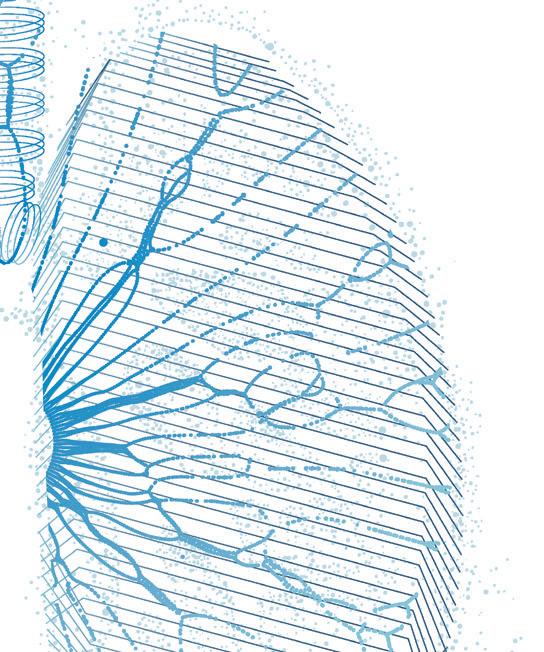
askgileadmedical.com
gileadclinicaltrials.com
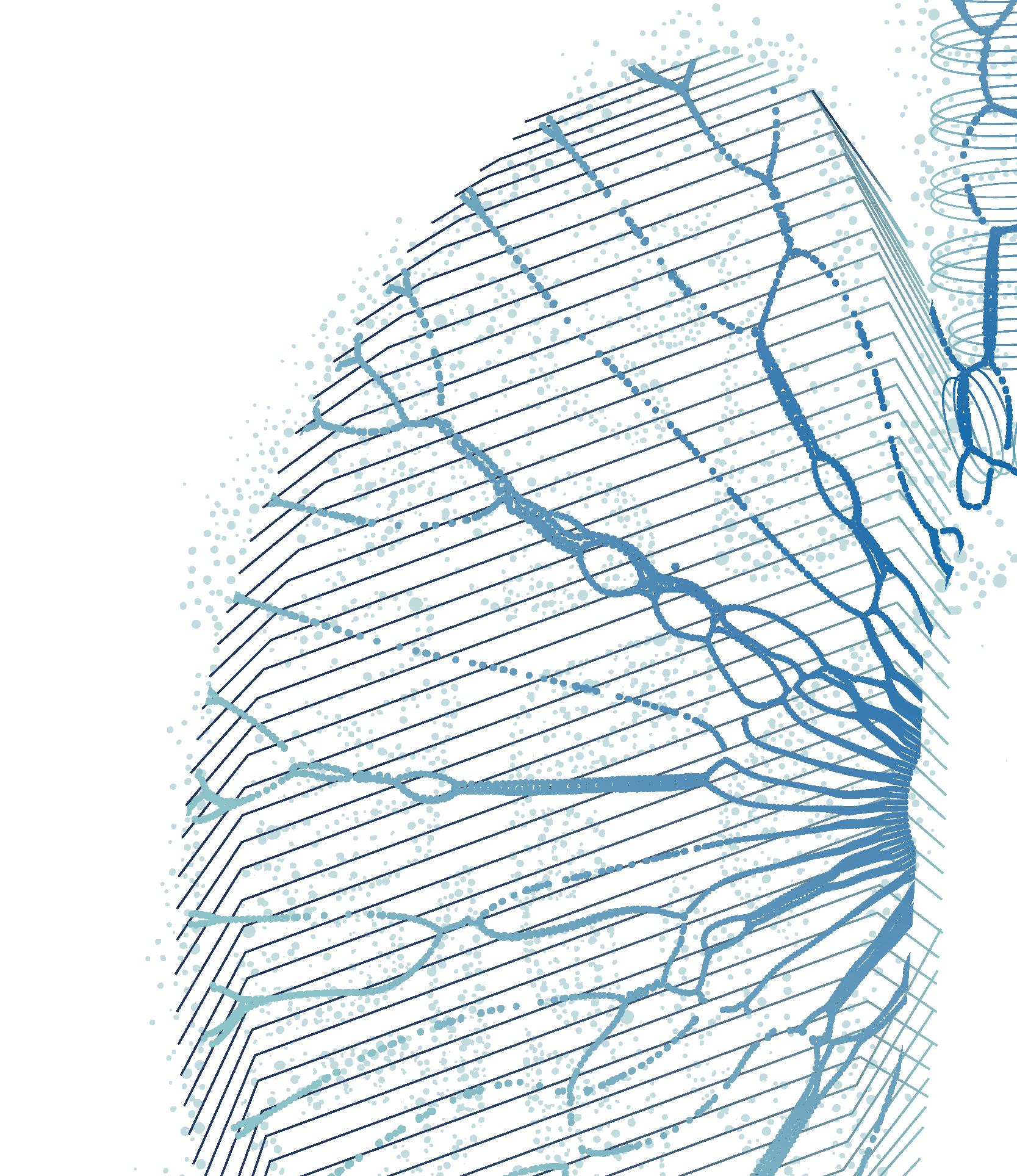
GILEAD and the GILEAD logo are trademarks of Gilead Sciences, Inc.
All other marks are property of their respective owners.
© 2025 Gilead Sciences, Inc. All rights reserved. MA-NON-NA-US-00289 05/25
